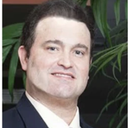Posted underTuberous Breast Correction Surgery q&a
What happens if the fat rejects from fat grafting?
I have tubular breasts and am undergoing surgery in a month to try and correct this. What are the risks of the fat rejects?
Answers (4)
From board-certified doctors and trusted medical professionals
Dr. Gary M. Horndeski, MD

Dr. Gary M. Horndeski, MD
Board Certified Plastic Surgeon
Answer
Dr. Benjamin Baker, BMBS MBA FRCS(Plast)

Dr. Benjamin Baker, BMBS MBA FRCS(Plast)
Specialist Registered Plastic Surgeon
Answer
Dr. Kenneth Hughes, MD

Dr. Kenneth Hughes, MD
Board Certified Plastic Surgeon
Answer
Dr. Anna I. Wooten, MD, FACS
Dr. Anna I. Wooten, MD, FACS
Board Certified Plastic Surgeon
Answer
More Tuberous Breast Correction Surgery Questions
See all Tuberous Breast Correction Surgery Q&AWE SEND PRETTY
EMAILS
What’s trending? Who’s turning heads? Which TikTok myths need busting? We’ve got you. No fluff, no gatekeeping—just real talk. Get our free, unfiltered newsletter.